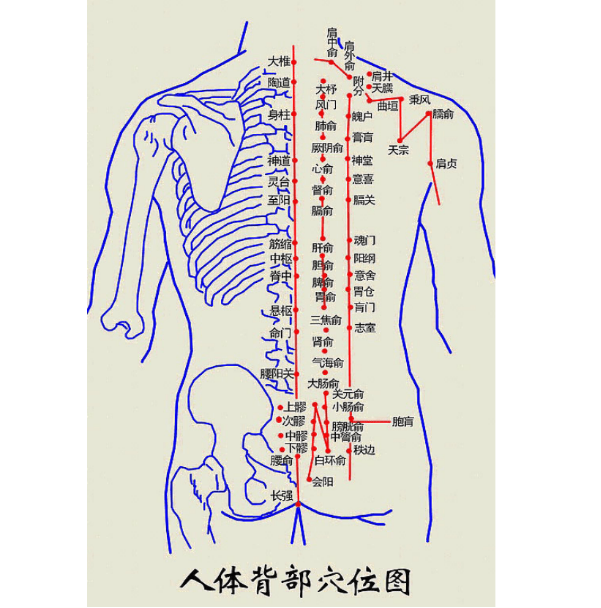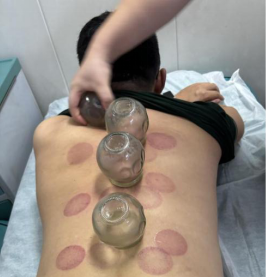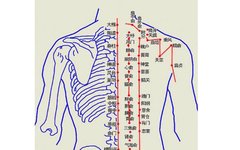Cupping therapy, commonly known as “fire cupping,” is a well-known treatment method. It typically uses glass cups as tools, employing methods such as burning and suction to remove air from the cups, creating negative pressure that allows the cups to adhere to specific areas of the body (affected areas, acupuncture points), stimulating local blood flow and producing a phenomenon of local congestion or bruising. This method aims to prevent and treat diseases and strengthen the body. Like acupuncture, cupping is a form of physical therapy and is considered one of the most effective therapies within this category, suitable even for children. Modern TCM treatments also include bamboo cups, ceramic cups, and air cups.

The entire process of balanced cupping includes five steps: flash cupping, rubbing cupping, moving cupping, shaking cupping, and retaining cupping. Flash cupping has the effect of warming the meridians and dispelling cold; rubbing cupping can relax muscles and unblock meridians; moving cupping enhances nerve and muscle excitability and accelerates blood circulation; shaking cupping can clear heat and drain fire, invigorate blood, and resolve stasis; retaining cupping warms the meridians, dispels cold, and relieves dampness. Today, I will introduce balanced cupping, which is based on the theory of Yin and Yang, utilizes the theory of nerve conduction, and focuses on self-balance. It employs different cupping techniques on the human body as a non-pharmacological natural balancing therapy, an important component of balanced acupuncture.



Flash Cupping Rubbing Cupping Retaining Cupping
Shaking and Moving Cupping
The significance of cupping marks and colors
Common cupping marks include erythema, purplish-red or purplish-black bruises, and small purplish-red spots, often accompanied by varying degrees of heat and pain. These skin changes are part of the therapeutic effects of cupping therapy and can last from one to several days.
1 If the cupping marks appear as blisters, edema, or watery, it indicates that the patient has excessive dampness or has contracted dampness.
2 If the blisters are blood-red or dark red after cupping, it indicates a pathological response of long-term illness with dampness and blood stasis.
3 If the cupping marks show deep red, purplish-black, or red rashes, with slight pain upon touch and accompanied by body heat, it indicates the presence of heat toxin in the patient.
4 If the cupping marks are purplish-red or purplish-black without rashes or heat, it indicates blood stasis in the patient.
5 If there are no color changes in the skin and it feels cool to the touch, it often indicates a deficiency-cold condition in the patient.
6 If the cupping marks are slightly itchy or show skin lines, it often indicates a wind condition in the patient.
7 Generally, healthy individuals do not show significant changes in cupping marks.
Indications:
1 Chronic Fatigue Syndrome: For symptoms of prolonged fatigue, weakness, and lack of energy, balanced cupping can stimulate the qi, regulate the organs, and help restore physical strength.
2 Colds: For symptoms of cough, runny nose, and fever caused by wind-cold or wind-heat, balanced cupping can dispel cold pathogens and alleviate symptoms.
3 Neck and Back Pain: Including pain caused by cervical spondylosis, shoulder periarthritis, lumbar muscle strain, and lumbar disc herniation, balanced cupping can unblock the meridians and relieve pain.
4 Insomnia: The balanced cupping therapy can relieve fatigue and promote relaxation, thereby improving sleep quality.
5 Rheumatic Pain: For joint pain and swelling caused by rheumatism, balanced cupping can invigorate blood circulation, unblock meridians, and relieve pain and swelling.
6 Other Conditions: Such as various nerve paralysis, abdominal pain, dysmenorrhea, dizziness, indigestion, and gastric pain, as well as surgical conditions like erysipelas and initial stages of snake bites, can also be treated with balanced cupping therapy.
Contraindications:
1 Blood Disorders: Patients with bleeding disorders, simple purpura, or allergic purpura may experience bleeding after balanced cupping treatment, thus it should be avoided.
2 Pregnant Women: Balanced cupping has blood-invigorating effects, which may lead to miscarriage or premature birth, so it should be avoided by pregnant women. Special care should be taken to avoid cupping on the lower abdomen and lumbar region of pregnant women.
3 Skin Diseases: If there are skin lesions or allergies, using balanced cupping may cause damage to the skin, so patients should avoid it.
4 Special Physiological States: Such as extreme hunger, fullness, thirst, intoxication, extreme weakness, or mental illness, should also avoid balanced cupping therapy. Additionally, women during menstruation should avoid cupping.
5 Multiple Organ Dysfunction: Patients with poor physical condition may worsen their condition or experience unexpected complications from cupping.
Written by: Cao Shengzi
Edited by: Yuan Sha

